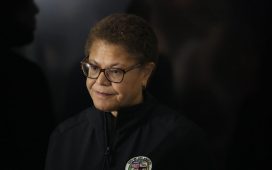Company leaders don’t know exactly what to expect for industry volume in the near term in light of the economic factors affecting the used-vehicle market, Garcia said. He cited a combination of inflationary pressures, rising interest rates and fluctuating consumer confidence as hindering Carvana’s volume growth in the first half of 2022. Demand dropped industrywide in July, too, he said.
Price depreciation made its way back into the used-vehicle market this year, Garcia said.
“Given that car prices have inflated more than other goods and services, it is probably likely that, on average, they will depreciate faster in the future to kind of get back into alignment with their relationship with other goods and services,” he said.
Carvana’s operating expenses rang up to $721 million in the second quarter, down slightly from $727 million in the first quarter.
The company experienced a quarter-over-quarter increase in logistics spending, a large portion of which went to third-party transport services Carvana used to “clear certain backlogs out of the logistics network in areas that were particularly constrained,” Jenkins said. He said he doesn’t expect Carvana to bear logistics costs to nearly that degree in the third quarter.
Carvana continues to integrate ADESA U.S., the large physical auction network it purchased May 9 from wholesale auction company KAR Global.
That $2.2 billion blockbuster transaction was met with mixed reactions when announced in February. Some automakers and dealers chose to end business with ADESA U.S. given that Carvana is a formidable competitor in the used-vehicle sector.
Garcia acknowledged that some ADESA U.S. customers initially reacted negatively to the news and that the auction unit lost some volume as a result. But since then, a number of customers have returned, he said last week.
“We’ve seen some big commercial accounts start to shift more business back to ADESA,” Garcia said.
He didn’t specify the companies or the amount of volume that returned. Carvana officials didn’t answer questions from Automotive News seeking that information.
Garcia said he believes the reach of the 56-site ADESA U.S. network “dramatically simplifies” the company’s logistics and could help cut transportation costs.
“When we buy a car from a customer and we’re able to drop it off at a nearby ADESA [location] instead of running it through our logistics network, we can save pretty material dollars per transaction there,” Garcia said.








